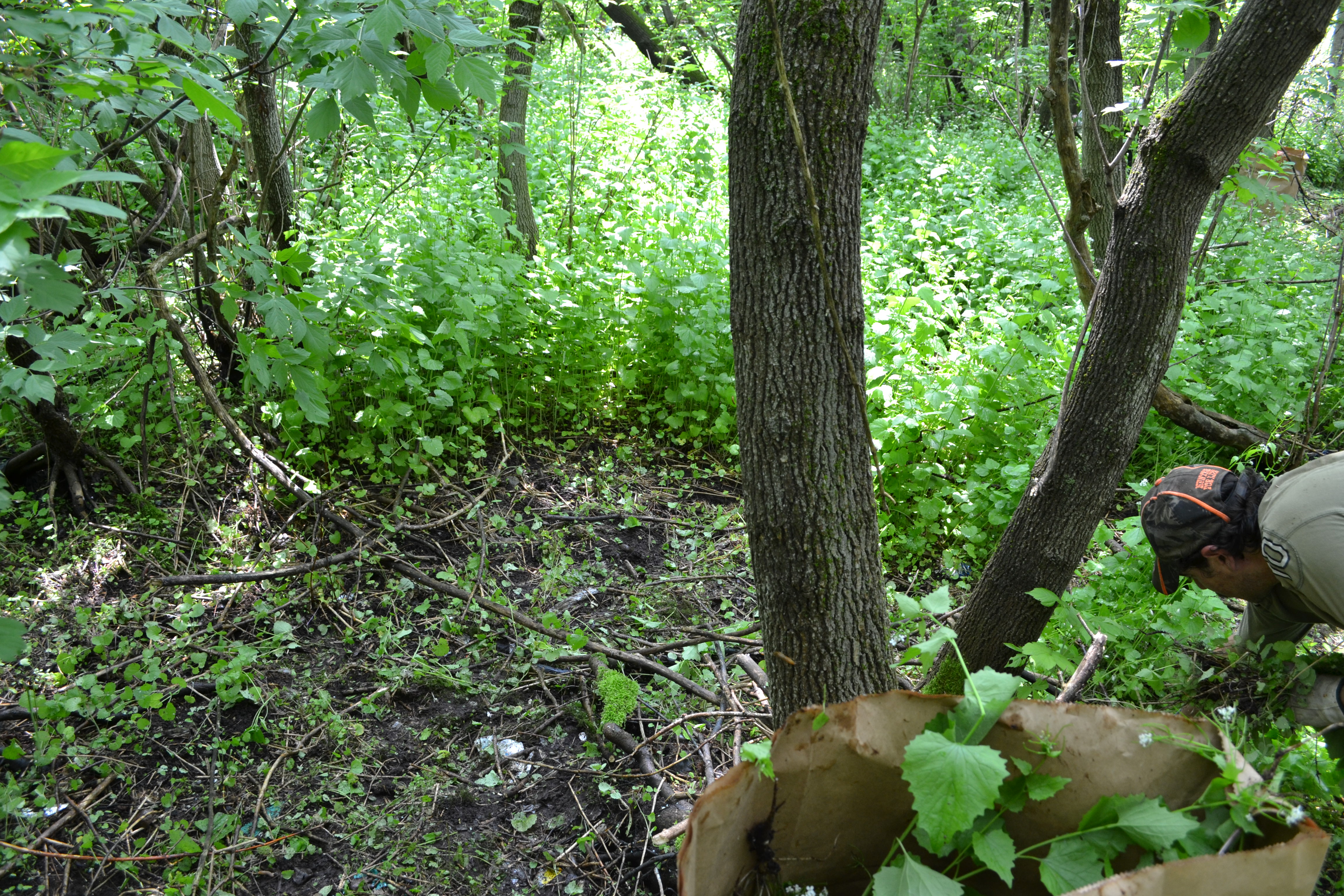Exotic invasive species (EIS) are plants, insects or pathogens that, either intentionally or not, have been introduced to a new habitat where they have the ability to cause harm to the environment, the economy and/or society. A variety of EIS are detrimental to the hardwood forests of Ontario. For example, invasive plants can alter forest integrity through rapid population expansion. They can out-compete many native species and cause shifts in species abundances, thereby altering the forest ecosystem. Invasive insects and pathogens can severely damage hardwood trees, reducing timber value and potentially causing large-scale hardwood mortality.
There are several strategies, techniques and control options to be aware of when dealing with EIS. Prevention is the most efficient and cost effective approach to management. Creating a prevention plan and keeping a diverse and healthy forest can reduce the risk of invasion. When planning any type of forest management woodlot owners should include a plan to prevent the spread or introduction of EIS. For example, soil disturbance will make an area prone to invasion, especially if there are invasive plants in the vicinity. As a mitigation strategy, plant native species in areas where soil disturbance is unavoidable and monitor the area frequently to ensure that invasive plants do not establish. It is important to keep all equipment such as tractors, skidders and all-terrain vehicles free of mud and debris that can harbour seeds and plant fragments. Clean and inspect equipment in a designated area that can be monitored for suspect invaders. Invasive insects and diseases caused by pathogens can also be prevented through keeping up-to-date with quarantines that restrict the movement of firewood and other wood related products. Keep trees healthy and prevent bark damage as wounds can increase susceptibility to pathogen infection and weaken resistance to insect attack.
Early detection and rapid response is the next best thing to prevention. Having the ability to detect newly established EIS at the initial stage of invasion is important. Invasive species are much easier and cheaper to control in these early stages and being able to respond rapidly after a new invasion is detected will minimize the overall damage to the woodlot. Learn how to properly identify EIS that are prominent in the area and become familiar with the species in your woodlot. Although managers may already have an inventory of tree species as part of their woodlot management plan, it is a good idea to also include understory species. Afterwards, if any new EIS appear they will be readily detected, decreasing the likelihood of new invasions. Visual surveys and monitoring activities are important in the detection of invasive insects and pathogens. Look for multiple signs of invasion to help properly identify the causative agent.
Effective invasive species management requires an understanding of the biology of the trees and other living things in the hardwood forest, including the EIS. Management options should take into consideration the environmental and social context. Management and control options for EIS that affect hardwood stands should be based on maintaining a healthy forest. This requires planning, commitment, effort and money. Forest managers and woodlot owners should choose methods that are well aligned with their objectives and goals for the present and future use of the woodlot.
Physical control is the manual removal or destruction of the invasive species. Depending on the species to be controlled, hand-pulling, digging out roots, removing flower heads, or mulching may be effective.

Hand-pulling garlic mustard (Alliaria petiolata) in the forest understory
Biological control involves releasing living organisms that feed upon, parasitize or infect the unwanted species. These programs are coordinated nationally or regionally and are beyond the ability of individual landowners, but the results of successful programs are cost-effective and long lasting.
Chemical control with pesticides can be part of an effective control program. Pesticides are most effective when they focus on vulnerable life stages, and when they weaken or kill the EIS, and give a selective competitive advantage to desired species. Many pesticides require a licensed exterminator to be applied. Refer to the Pest Management Regulatory Agency, or provincial environment or natural resource ministries for more information on pesticide use.
The Invasive Species Research Institute published “A guide to the identification and control of invasive species in Ontario’s hardwood forests” last year, funded in part by the Invasive Species Centre (ISC). This richly illustrated guide is packed with information about 25 species invading Ontario’s forests, and includes information about identification, look-alikes, effects and control strategies. You can view this guide online at (http://www.isri.ca/current-projects/invasive-species-guidebook.html), or buy a copy at Amazon.com (www.amazon.com/dp/0929100212).
Lisa M. Derickx, B.Sc., is a Research Associate at the Invasive Species Research Institute (ISRI) in Sault Ste. Marie, Ontario. She has a B.Sc. Honours Degree in Environmental Science from Carleton University and a diploma in Fish and Wildlife Conservation from Sault College of Applied Arts and Technology. As primary author, she recently published “A Guide to the Identification and Control of Exotic Invasive Species in Ontario’s Hardwood Forests”. Email: [email protected]
- Log in to post comments
